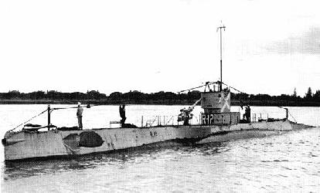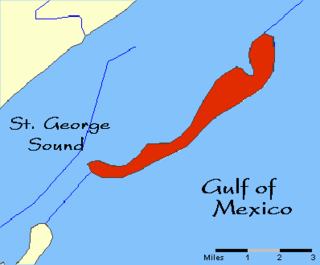Cover of Florida's Shipwrecks | |
| Author | Michael C. Barnette |
|---|---|
| Country | United States |
| Language | English |
| Publisher | Arcadia Publishing |
Publication date | 2008 |
| Media type | Softback |
| Pages | 127 pp |
| ISBN | 978-0-7385-5413-6 |
| OCLC | 259716927 |
| LC Class | G525 .B266 2008 |
Florida's Shipwrecks is a 2008 history book by Michael C. Barnette about shipwrecks in the coastal waters of Florida. Barnette has been actively diving and researching shipwrecks for close to twenty years, and this has resulted in the identification of seventeen wreck sites. [1] He applies this knowledge and passion for wrecks to this overview of shipwrecks around Florida. [2] Barnette's "diligent research" details famous ship owners and those who used the ships. [2] The photographs are a "truly amazing" collection of yachts and tankers in "their full glory" and before they sank below the surface. [2]
Michael C. Barnette is an accomplished diver, author, photographer and founder of the Association of Underwater Explorers.

A shipwreck is the remains of a ship that has wrecked, which are found either beached on land or sunken to the bottom of a body of water. Shipwrecking may be deliberate or accidental. In January 1999, Angela Croome estimated that there have been about three million shipwrecks worldwide.

Florida is the southernmost contiguous state in the United States. The state is bordered to the west by the Gulf of Mexico, to the northwest by Alabama, to the north by Georgia, to the east by the Atlantic Ocean, and to the south by the Straits of Florida. Florida is the 22nd-most extensive, the 3rd-most populous, and the 8th-most densely populated of the U.S. states. Jacksonville is the most populous municipality in the state and the largest city by area in the contiguous United States. The Miami metropolitan area is Florida's most populous urban area. Tallahassee is the state's capital.
The first chapter, "After the Storm", begins by reviewing shipwrecks left following the many hurricanes that have disrupted the shipping trade. The second chapter, "River of Gold", is an overview of the wrecks from Spanish treasure ships such as the Atocha . The third chapter, "Coursing waters", centers on wrecks from shipping that occurred before rail systems became popular for shipping. The fourth chapter, "Legacy of War", reviews wrecks that remained following the heavy German U-boat activity during World War II. The fifth chapter, "That Sinking Feeling", brings the reader to the modern wrecks reminding them of the unforgiving nature of the sea.

A tropical cyclone is a rapidly rotating storm system characterized by a low-pressure center, a closed low-level atmospheric circulation, strong winds, and a spiral arrangement of thunderstorms that produce heavy rain. Depending on its location and strength, a tropical cyclone is referred to by different names, including hurricane, typhoon, tropical storm, cyclonic storm, tropical depression, and simply cyclone. A hurricane is a tropical cyclone that occurs in the Atlantic Ocean and northeastern Pacific Ocean, and a typhoon occurs in the northwestern Pacific Ocean; in the south Pacific or Indian Ocean, comparable storms are referred to simply as "tropical cyclones" or "severe cyclonic storms".

Nuestra Señora de Atocha was a Spanish treasure galleon and the most widely-known vessel of a fleet of ships that sank in a hurricane off the Florida Keys in 1622. At the time of her sinking, Nuestra Señora de Atocha was heavily laden with copper, silver, gold, tobacco, gems, and indigo from Spanish ports at Cartagena and Porto Bello in New Granada and Havana, bound for Spain. The ship was named for the parish of Atocha in Madrid.

Rail transport is a means of transferring of passengers and goods on wheeled vehicles running on rails, also known as tracks. It is also commonly referred to as train transport. In contrast to road transport, where vehicles run on a prepared flat surface, rail vehicles are directionally guided by the tracks on which they run. Tracks usually consist of steel rails, installed on ties (sleepers) and ballast, on which the rolling stock, usually fitted with metal wheels, moves. Other variations are also possible, such as slab track, where the rails are fastened to a concrete foundation resting on a prepared subsurface.
This book by Arcadia Publishing is another in their "Images of America" series.











